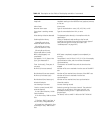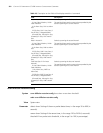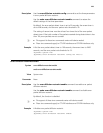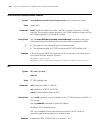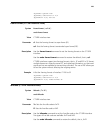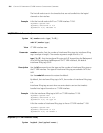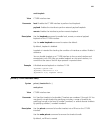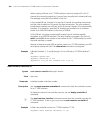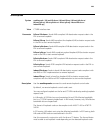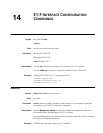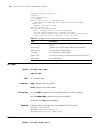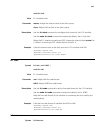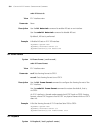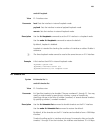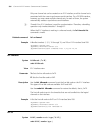
229
sendloopcode
Syntax sendloopcode { fdl-ansi-llb-down | fdl-ansi-llb-up | fdl-ansi-plb-down |
fdl-ansi-plb-up | fdl-att-plb-down | fdl-att-plb-up | inband-llb-down |
inband-llb-up }
View CT1/PRI interface view
Parameter fdl-ansi-llb-down: Sends ANSI-compliant LLB deactivation request code in the
FDL to remove loopback.
fdl-ansi-llb-up: Sends ANSI-compliant line loopback (LLB) activation request code
in the FDL to start remote loopback.
fdl-ansi-plb-down: Sends ANSI-compliant PLB deactivation request code in the
FDL to remove loopback.
fdl-ansi-plb-up: Sends ANSI-compliant payload loopback (PLB) activation request
code in the FDL to start remote loopback.
fdl-att-plb-down: Sends AT&T-complaint PLB deactivation request code in the
FDL to remove loopback.
fdl-att-plb-up: Sends AT&T-complaint PLB activation request code in the FDL to
start remote loopback.
inband-llb-down: Sends in-band LLB deactivation request code compliant with
the ANSI or AT&T implementation to remove loopback.
inband-llb-up: Sends in-band line loopback (LLB) activation request code
compliant with the ANSI and AT&T implementation to start remote loopback.
Description Use the
sendloopcode command to send remote loopback control code.
By default, no remote loopback control code is sent.
You may configure loopback on the far-end CT1/PRI interface by sending loopback
request code.
In LLB mode, all 193 bits (one synchronization bit and 192 effective bandwidth
bits) in a T1 PCM frame are looped back. In PLB mode, however, only 192 effective
bandwidth bits are looped back.
The format of loopback code can be compliant with ANSI T1.403 or AT&T TR
54016.
In SF framing, LLB code is sent using the effective bandwidth. In ESF framing, both
LLB code and PLB code are sent/received in the FDL.
Use this command in conjunction with the far-end T1 device. The far-end device
must be able to set loopback mode depending on the detected loopback code.



